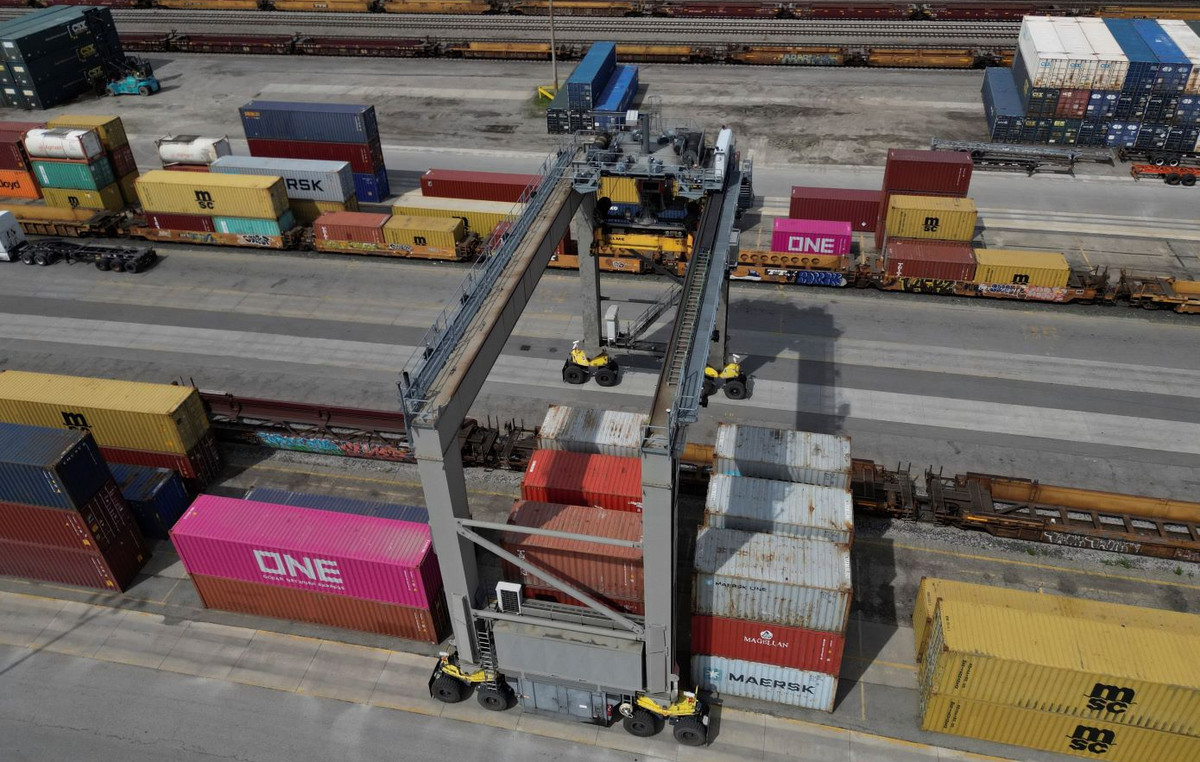With the Beijing 2022 Winter Olympics approaching, the world’s first autonomous high-speed train is already in action, transporting athletes and officials between the two major cities that host the games on the historic Beijing-Zhangjiakou Intercity Railway.
The fact that this bullet train can drive itself is quite remarkable. But midway through the 56-minute ride, he passes another engineering marvel: Badaling Great Wall Station.
Completed in 2019, the station is just steps from the entrance to Badaling, the most popular section of the centuries-old wall.
To protect the iconic monument from structural damage, the railway line and accompanying station were built deep underground.
Preserving the Great Wall
Buried 102 meters underground and covering an area of over 36,000 square meters, the three-story structure is considered to be the largest and deepest underground high-speed railway station in the world.
Building such a complex station, which includes a 12 kilometer long tunnel system, under a UNESCO World Heritage Site, was no easy task.
According to Chinese state media, engineers used an electronic detonator to precisely time the explosives down to the millisecond.
It was the first time this technology had been used in China and allowed workers to maintain a vibration speed below 0.2 centimeters per second.
This means that each blast was precisely calculated to ensure the impact was no stronger than a single step taken on the Great Wall.
Starting in 2016, construction of the tunnel and station took about three years to complete.
The high-speed railway shortens the journey from around an hour and a half – with traffic congestion that can make that time much longer – between China’s capital and the part of the Great Wall at Badaling to nearly 27 minutes.
The station is just a few minutes from the Great Wall cable car station and about 800 meters from the Great Wall departure point in Badaling.
It is also home to the second longest escalator in China at 88 meters long and 42 meters high.
Due to the distance from the entrance to the train platform, the station gate is closed to customers 12 minutes before the last train departs, instead of the usual five minutes at other stations in China, to ensure that passengers have enough time to do the way through the giant station.
Will the Great Wall appear at the Winter Olympics?
While there are no Olympic sporting events taking place anywhere near the Great Wall of Badaling, it will form part of the torch relay, which runs from February 2-4.
That’s why the station, as well as the Badaling section of the wall, is closed between the 2nd and 3rd of February.
Badaling is not the only part of the Great Wall that will appear on TV screens as part of the Winter Olympics ceremonies.
Chongli District and Yanqing District, two areas with Olympic Winter Villages, also house parts of the old wall.
Some slopes at the National Ski Jumping Center in Chongli are within 20 meters of the Great Wall, offering historic views for skiers competing in the games.
Winter Olympics high-speed rail
The 173.8 km long Beijing-Zhangjiakou Railway is served by a new multiple electric unit (MEU) high-speed train, the Fuxing, developed and operated by the state-owned China State Railway Group.
Opened in early January, it can run at up to 350 kilometers per hour and reduces travel time between two of the main host cities of the Olympic Games from three hours to 56 minutes.
Although the high-speed train is autonomous, a driver who monitors it is on board at all times. The train can automatically start, stop and adjust between different speed limits between stations.
The train’s eight cars are equipped with 5G signal, intelligent lighting and 2,718 sensors to collect real-time data and detect any operational anomalies.
Special wagons were designed with the athletes’ needs in mind. For example, some cabins have larger storage areas for winter sports equipment, which can be accessed via a QR code.
In addition to the main railway line, there are also two branches, Yanqing and Chongli, which connect authorized passengers to two important Olympic Winter Games villages.
A 55-day closed-loop management system, which began on January 21, has been implemented so that those heading to the Olympics do not share the same train cars as other passengers on the line.
Source: CNN Brasil
I’m James Harper, a highly experienced and accomplished news writer for World Stock Market. I have been writing in the Politics section of the website for over five years, providing readers with up-to-date and insightful information about current events in politics. My work is widely read and respected by many industry professionals as well as laymen.







